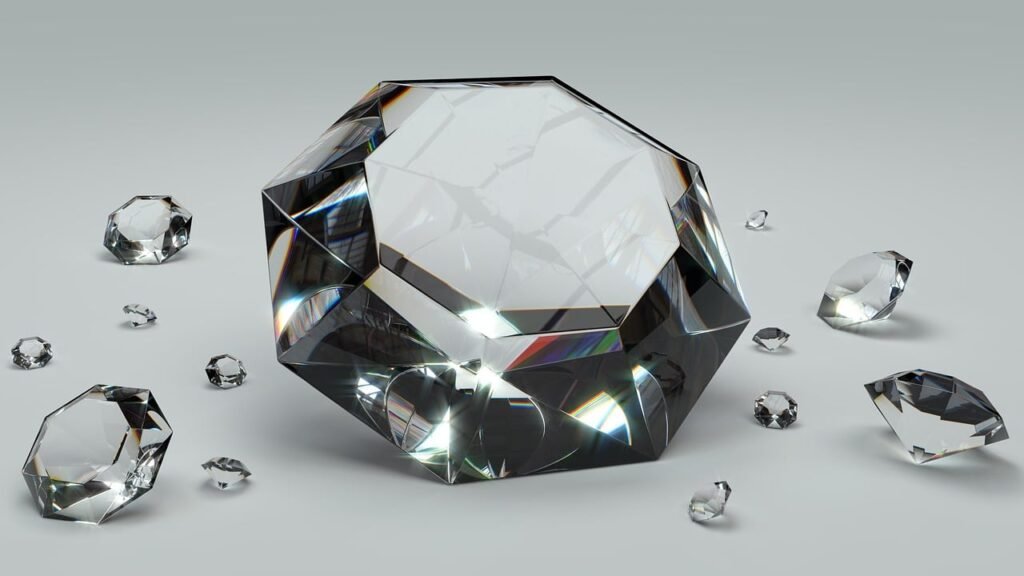Arizona has long been known for its desert landscapes, striking sunsets, and deep cultural traditions, but over the past few decades, it has quietly carved out a reputation as a leading hub for the jewelry trade. Today, more diamonds are changing hands in Arizona than ever before, with both buyers and sellers fueling an active and competitive marketplace. This surge isn’t by chance—it’s the result of history, culture, economics, and shifting consumer behaviors that all converge in the state. From Scottsdale’s luxury boutiques to Tucson’s world-famous gem show, Arizona has become a diamond destination unlike any other.
The Historical and Cultural Foundation
To understand Arizona’s thriving diamond market today, it’s worth looking at its cultural foundations. The state’s history with jewelry and gemstones stretches back centuries, with Native American communities crafting intricate silver and turquoise pieces that are still highly sought after worldwide. This appreciation for craftsmanship and adornment laid the groundwork for a vibrant jewelry culture that only expanded as Arizona’s cities grew.
By the mid-20th century, Phoenix, Tucson, and Scottsdale had established themselves as key trading spots for precious stones and fine jewelry. While turquoise and silver initially defined the region’s jewelry identity, diamonds gradually became part of the picture as wealth and luxury lifestyles developed in Arizona’s growing cities. These deep cultural roots still influence the market today, as Arizona continues to blend traditional artistry with modern luxury.
Arizona as a Modern Jewelry Hub
Arizona is no longer just a state with strong cultural ties to jewelry—it has grown into one of the country’s most dynamic jewelry markets. Scottsdale, in particular, has developed a reputation as a hotspot for luxury shopping, featuring high-end jewelers, private buyers, and boutique dealers. A trusted Scottsdale diamond buyer can often be found helping clients evaluate and resell diamonds, giving both locals and visitors confidence in the market.
Meanwhile, Phoenix, as one of the fastest-growing metro areas in the US, has attracted a mix of international jewelers, appraisers, and traders who contribute to the growing demand for diamonds.
Perhaps most influential is the Tucson Gem & Mineral Show, one of the largest and most renowned events of its kind in the world. Each year, it attracts thousands of traders, collectors, and enthusiasts who come not only for rare gemstones but also for diamonds. This global event highlights Arizona’s importance as a gathering place for international jewelry commerce and helps drive awareness of the state as a trusted marketplace.
Why the Market Is Booming Now
Several forces have converged to create today’s booming diamond trade in Arizona. First is the state’s economic growth. Arizona’s population has been rising steadily, with Phoenix now the fifth-largest city in the U.S. This influx includes retirees looking to downsize and sell heirloom jewelry, as well as affluent newcomers seeking to buy luxury items that fit their lifestyles. The combination means both supply and demand for diamonds are growing simultaneously.
Another factor is economic uncertainty. In times of inflation or volatile stock markets, people often turn to tangible assets like gold, silver, and diamonds. Arizona’s established buyer networks and evaluation expertise make it an attractive place to sell or purchase with confidence. The state’s reputation for offering competitive pricing and transparent transactions has only strengthened this trend.
Generational change also plays a role. Millennials and Gen Z are more open to selling inherited jewelry, repurposing stones, or buying pre-owned diamonds as part of a broader interest in sustainability and value. Their focus on unique, meaningful purchases rather than traditional luxury has fueled a secondary market where diamonds change hands more frequently.
Technology and Transparency
In the past, jewelry transactions were often opaque, with sellers relying on retail jewelers for evaluations that didn’t always reflect market value. Arizona’s diamond market has adapted to modern demands by embracing transparency and technology. Buyers in the state increasingly use GIA-certified gemologists to provide accurate assessments, while online platforms and local dealers make it easier for sellers to compare offers.
This combination of professional expertise and open competition ensures fairer pricing. Sellers feel more confident knowing their pieces are evaluated against global standards, while buyers benefit from clear grading and certification processes. Technology has also opened Arizona’s marketplace to a wider audience. Someone looking to sell a diamond in Scottsdale or Phoenix can now reach buyers across the country, while Arizona buyers gain access to a more diverse selection of diamonds sourced from multiple sellers.
Lifestyle and Luxury in Arizona
Arizona’s strong luxury lifestyle culture adds another layer to the growing diamond trade. Scottsdale is often seen as the centerpiece of this trend, where high-end restaurants, resorts, and galleries naturally pair with luxury shopping, including diamonds and fine jewelry. Buyers in these markets are often looking for investment-grade pieces or unique jewelry that reflects their personal style.
Tourism also fuels the market. Arizona welcomes millions of visitors each year, many of whom come during the winter months as “snowbirds.” These visitors often explore luxury shopping districts, attend jewelry shows, or even sell diamonds while vacationing. The seasonal influx creates a steady stream of both buyers and sellers, making Arizona’s jewelry trade unusually dynamic compared to states with less tourism.
What It Means for Buyers and Sellers
The growth of Arizona’s diamond market creates clear advantages for both sides of a transaction. For sellers, the state offers competitive options, whether through trusted local buyers, private jewelers, or specialized dealers who can provide fair evaluations. The presence of GIA-certified gemologists ensures that diamonds are assessed accurately, which helps sellers get the most value for their pieces.
For buyers, Arizona provides access to unique inventory that might not be available elsewhere. Estate jewelry, repurposed pieces, and high-end diamonds all move through the market at a fast pace, offering opportunities for collectors and investors. Because the market is so active, buyers can often find diamonds at prices more favorable than traditional retail settings. This dual benefit makes Arizona one of the most appealing places in the U.S. for diamond transactions.
Conclusion
Arizona’s diamond market is thriving like never before, shaped by history, culture, economics, and evolving consumer values. From the traditional artistry that laid the foundation to the modern luxury hubs of Phoenix and Scottsdale, the state has built an ecosystem where more diamonds are changing hands every year. Buyers benefit from access to unique and fairly priced pieces, while sellers find an eager and competitive marketplace. In the end, Arizona is no longer just a participant in the diamond trade—it is becoming one of its central stages, where tradition and modern demand meet in a flourishing exchange.

Jennifer Marshall is a friendly and talented journalist who loves telling stories. She is an expert in writing biographies that make people’s lives shine. With clear and simple words, Jennifer creates engaging stories that everyone can enjoy. With 9 years of experience, her passion for writing helps her connect with readers and share inspiring tales.
